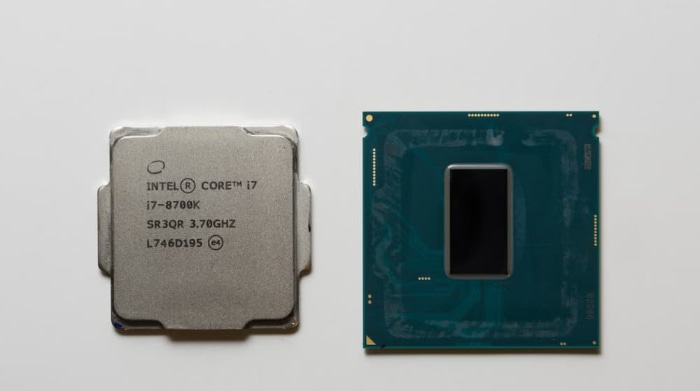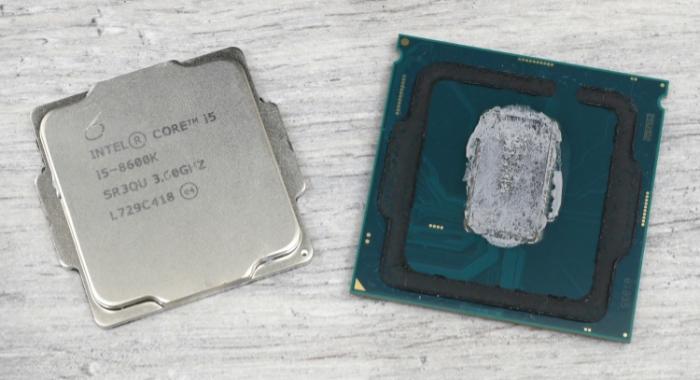What Is CPU Delidding? Advanced Cooling Explored

CPU performance is a critical aspect of modern computing, affecting everything from gaming to professional applications. As users push the boundaries of what their hardware can achieve, heat generation becomes a key concern.
This leads to a quest for innovative cooling solutions, one of which is CPU delidding. This process, while not mainstream, offers intriguing possibilities for enhancing CPU performance, especially in scenarios where traditional cooling methods fall short.
Understanding CPU Architecture
The Central Processing Unit (CPU) is often referred to as the brain of a computer, playing a crucial role in processing instructions and managing tasks. Its architecture is complex, involving various components that work in tandem to execute computational tasks efficiently.
Grasping the fundamentals of CPU architecture is essential for appreciating the intricacies of CPU delidding and its impact on performance.
Core Components and Their Functions
At the heart of the CPU architecture are the cores. Modern CPUs can have multiple cores, each capable of performing independent tasks.
This multi-core design enhances the CPU's ability to handle simultaneous processing, a key factor in multitasking and high-performance computing. The cache, another vital component, stores frequently accessed data for quick retrieval, significantly speeding up processing time.
The Role of Clock Speed
Clock speed, measured in gigahertz (GHz), indicates the frequency at which a CPU executes instructions. Higher clock speeds generally translate to faster processing capabilities.
However, this increased speed can lead to greater heat generation, making efficient thermal management crucial.
Heat Generation in CPUs
As CPUs process data, they generate heat. This heat production is a natural byproduct of electrical energy used within the CPU's transistors.
Effective dissipation of this heat is essential to maintain optimal performance and prevent overheating, which can lead to thermal throttling or even permanent damage to the CPU.
Thermal Interface Material (TIM)
The Thermal Interface Material (TIM) plays a key role in CPU design. Positioned between the CPU die and the heat spreader, TIM facilitates efficient heat transfer to the cooling solution, be it air or liquid-based.
The quality and application of TIM are critical factors in a CPU's thermal management system.
Importance of Effective Cooling
Effective cooling ensures that the CPU operates within safe temperature ranges, thereby sustaining performance and prolonging lifespan. Advanced cooling solutions, including delidding, become necessary when conventional cooling methods are insufficient, especially in high-performance or overclocking scenarios.
The Concept of CPU Delidding
CPU delidding is a technique adopted by computer enthusiasts and professionals alike to enhance the cooling efficiency of a CPU. This process involves removing the CPU's integrated heat spreader (IHS), exposing the underlying die for direct cooling.
Delidding is typically pursued to achieve lower temperatures, which is particularly beneficial in overclocking scenarios where excess heat is a limiting factor.
What is CPU Delidding?
Delidding a CPU means carefully removing the IHS, which is the metal lid that sits on top of the CPU die. The IHS's primary function is to protect the delicate die and spread out the heat it generates.
However, the stock thermal interface material (TIM) between the die and the IHS is not always the most efficient at transferring heat. Delidding allows users to replace the stock TIM with a higher-quality compound, or in some cases, to implement a more direct cooling solution on the die.
Historical Context and Evolution
The practice of CPU delidding gained popularity as enthusiasts sought ways to push their CPUs beyond standard performance benchmarks. Originally more common in older CPU models, the necessity and effectiveness of delidding have evolved with changes in CPU design and manufacturing.
Some modern CPUs are soldered, which can make delidding more complex and less beneficial.
Delidding and Overclocking
One of the primary reasons for delidding is to facilitate overclocking. Overclocking increases the clock speed of a CPU beyond its factory settings, enhancing performance. However, this also leads to higher heat production.
Delidding can significantly improve heat dissipation, allowing for more headroom in overclocking endeavors.
Risks and Considerations
While delidding can offer substantial cooling benefits, it is not without risks. It can void the CPU's warranty and, if not done carefully, can damage the CPU.
Understanding the intricacies of the CPU's design and having the right tools are crucial for a successful delidding process.
Through delidding, users can achieve enhanced cooling performance, which is especially valuable in high-performance computing environments. This technique represents a unique intersection of engineering, innovation, and the relentless pursuit of optimal computing efficiency.
The Delidding Process

The delidding process is a meticulous and technical procedure requiring precision and caution. It involves removing the integrated heat spreader (IHS) from the CPU, allowing direct access to the CPU die.
This process, while risky, can lead to significant improvements in cooling efficiency, particularly for those seeking to overclock their CPUs or enhance thermal performance.
Preparation and Tools Required
Before starting, it’s essential to gather the necessary tools. A delidding tool, which is specifically designed for this purpose, ensures a safer and more controlled removal of the IHS.
Other tools might include a thermal paste or liquid metal for reapplication, cleaning solutions, and protective gloves.
Removing the Integrated Heat Spreader
The initial step is to carefully place the CPU within the delidding tool. This tool applies even pressure around the edges of the IHS, gradually lifting it away from the CPU die.
It's crucial to proceed slowly and carefully, as any abrupt movement can damage the CPU.
Cleaning and Application of New TIM
Once the IHS is removed, the next step involves cleaning the old thermal interface material (TIM) from both the CPU die and the inside of the IHS. This is typically done using a non-conductive cleaning solution.
After cleaning, a new layer of high-quality thermal paste or liquid metal is applied to the CPU die. The choice between thermal paste and liquid metal depends on the user's preference and the specific requirements of their CPU.
Reattaching the Heat Spreader
Reattaching the IHS is a delicate part of the process. The IHS needs to be precisely aligned and reattached to the CPU.
Some users opt to use silicone adhesive to reattach the IHS, while others leave it unattached, relying on the pressure from the CPU socket to hold it in place.
Testing and Evaluation
After the IHS is reattached, the final step is to reinstall the CPU in the computer and conduct thorough testing. This includes monitoring temperature changes, system stability, and performance enhancements.
Testing ensures that the delidding process was successful and that the CPU is functioning optimally with its new thermal setup.
Pros and Cons of CPU Delidding
CPU delidding is a technique embraced by many in the quest for optimal thermal performance of CPUs, especially among overclocking enthusiasts. This process, while offering tangible benefits in certain scenarios, also carries inherent risks and drawbacks.
Understanding these pros and cons is crucial for anyone considering delidding their CPU.
Advantages of CPU Delidding
- Improved Thermal Performance: The most significant benefit of delidding is the potential for lower operating temperatures. By replacing the stock thermal interface material (TIM) with a higher-grade compound, heat transfer from the CPU die to the heat spreader is more efficient, leading to cooler CPU temperatures.
- Enhanced Overclocking Potential: Lower temperatures generally allow for higher overclocking ceilings. CPUs that run cooler can often be pushed further in terms of clock speeds, resulting in better performance.
- Potential for Noise Reduction: Improved thermal efficiency can reduce the need for aggressive cooling solutions, which in turn can lead to a quieter system, particularly beneficial in environments where noise levels are a concern.
Disadvantages of CPU Delidding
- Risk of Physical Damage: Delidding involves physically altering the CPU, a process fraught with risks. Improper handling can lead to damaged CPU dies or heat spreaders, potentially rendering the CPU useless.
- Voided Warranty: Most CPU manufacturers consider delidding a violation of the warranty terms. Once a CPU is delidded, any manufacturer support for issues is typically forfeit.
- Potential for Inconsistent Results: The success of delidding can vary based on the CPU model, the skill of the person performing the delidding, and the quality of the materials used. There's no guarantee of a significant temperature drop, and in some cases, performance may not improve noticeably.
- Specialized Tools and Skills Required: Properly delidding a CPU requires specific tools and a steady hand. It's not a beginner-friendly procedure, and attempting it without the necessary skills and tools increases the risk of damaging the CPU.
Alternatives to CPU Delidding
While CPU delidding can be an effective way to enhance cooling performance, it is not the only method available. For those hesitant to modify their CPU directly, there are several alternative strategies to improve thermal management.
These methods range from using advanced cooling systems to optimizing case airflow, offering safer ways to maintain or enhance CPU performance without the risks associated with delidding.
Enhanced Cooling Solutions
- High-End Air Coolers: Advanced air cooling solutions offer significant cooling capacity without the complexities of liquid cooling. These coolers often feature large heatsinks and multiple fans, providing efficient heat dissipation.
- All-in-One (AIO) Liquid Coolers: AIO liquid coolers are a popular choice for efficient CPU cooling. They combine a water block, radiator, and fans in a pre-assembled, maintenance-free unit, offering superior cooling performance compared to traditional air coolers.
- Custom Water Cooling Loops: For the ultimate in cooling performance, custom water cooling loops can be assembled. This involves choosing individual components like the pump, radiator, water block, and reservoir. While complex and more expensive, custom loops offer excellent cooling efficiency and aesthetic appeal.
Case and Airflow Optimization
- Improving Case Airflow: Effective case airflow is crucial in maintaining low CPU temperatures. This can be achieved by arranging fans to create a balanced airflow, ensuring a steady supply of cool air to the CPU and efficient exhaust of hot air.
- Using High-Quality Thermal Paste: Applying a high-quality thermal paste can significantly improve the heat transfer between the CPU and its cooler. This is a simpler and less risky alternative to delidding.
Technological Advancements in CPU Design
- Investing in Newer CPU Models: Modern CPUs are often designed with improved thermal management in mind. Opting for a newer CPU model might negate the need for delidding, as manufacturers increasingly use better TIM and more efficient heat spreaders.
- Software-Based Solutions: Software optimization, like undervolting or adjusting power settings, can reduce heat generation without impacting performance significantly. This involves configuring the CPU to operate at lower voltages, thereby reducing heat output.
In conclusion, there are numerous alternatives to CPU delidding that can effectively manage heat generation and improve performance. These methods range from upgrading cooling systems to optimizing software settings, providing options for every level of expertise and budget.
While delidding has its place, these alternatives offer safer and often equally effective solutions for enhancing CPU thermal performance.
Conclusion
CPU delidding, a complex yet fascinating aspect of modern computing, represents a specialized approach to enhancing CPU performance through improved thermal management. This article has explored various facets of this practice, from its underlying principles and procedural steps to the risks and benefits involved.
Alongside delidding, we discussed alternative methods for managing CPU temperatures, such as advanced cooling systems and airflow optimization. These alternatives offer varied levels of efficiency and complexity, catering to different user needs and expertise levels.
Delidding stands out for its potential in significantly lowering CPU temperatures and enhancing overclocking capabilities. However, it's crucial to weigh these advantages against the inherent risks like potential physical damage and voided warranties.
For those hesitant to undertake such a technical challenge, the alternatives presented provide safer, yet effective means of achieving optimal CPU performance.
Ultimately, whether to delid a CPU or opt for alternative cooling methods depends on individual requirements, technical skill levels, and risk appetite. The evolving nature of CPU design and cooling technologies continues to offer exciting opportunities for enthusiasts and professionals alike to push the boundaries of computing performance.


